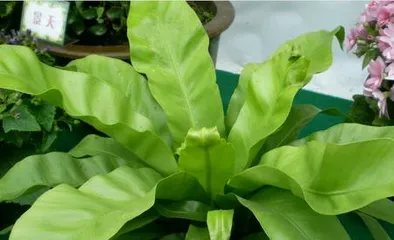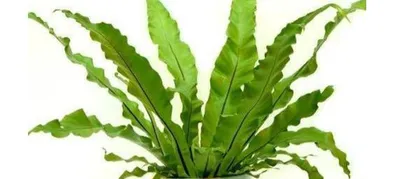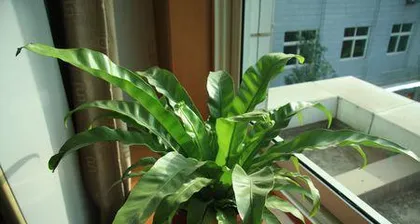Bird's nest fern is a common indoor plant, beautiful and elegant, not only can play a decorative role, but also can purify the air. However, if you want the bird's nest fern to grow lush and healthy, the correct maintenance techniques are crucial. The most important point is to master the frequency and method of watering.

I. Check the soil moisture before watering
Before watering, first insert your finger into the center of the soil to a depth of about 2-3 cm to determine if the soil is dry. If the soil feels moist, you can postpone watering; if it feels dry, you can water it appropriately. However, be careful not to overwater, as this can cause root rot.
II. Choose the right watering tool
For a plant like the bird's nest fern, you should choose a long-spouted watering can or a bucket for watering. This will ensure a steady water flow and reduce damage to the plant.

III. Master the timing of watering
The bird's nest fern is most suitable for watering in the morning or evening. The air humidity is higher in the morning, and the temperature is lower in the evening. Both of these times allow the plant to absorb water better.
IV. Water appropriately, not too much
The bird's nest fern is not tolerant of waterlogging, so it is important to water it in moderation and not too much. Generally, watering once or twice a week is sufficient.
V. Use warm water for watering
Cold water may affect the growth of the bird's nest fern, so warm water should be used for watering. Warm water can help the plant absorb nutrients better.

VI. Pay attention to the ambient temperature
The bird's nest fern is suitable for growing at a temperature between 18-25°C. If the temperature is too low or too high, it will harm the plant. You should check if the ambient temperature is suitable before watering.
VII. Pay attention to light conditions
The bird's nest fern has certain requirements for light. Too strong or too weak light will adversely affect the plant's growth. Before watering, you should ensure that the light conditions in the plant's growing environment are suitable.
VIII. Control air humidity
The bird's nest fern likes a humid environment, so you should pay attention to controlling the air humidity when watering. You can place some water next to the plant or use tools like a humidifier to adjust the air humidity.
IX. Adjust watering frequency according to the season
The climate conditions are different in different seasons, so you should adjust the watering frequency according to the climate conditions of each season. Generally, the watering frequency should be appropriately increased in spring and summer, and appropriately reduced in autumn and winter.
X. Pay attention to the bottom drainage hole
When watering, be sure to check if the bottom drainage hole is unobstructed. If the drainage hole is blocked, it will cause water to accumulate in the plant, leading to root rot.
XI. Use well-draining soil
Choosing well-draining soil can help the bird's nest fern absorb nutrients better and promote growth. It is recommended to use a soil mixture made of materials such as peat moss, perlite, and sand.
XII. Fertilize regularly
Appropriate fertilization can help the bird's nest fern absorb nutrients better and promote growth. It is recommended to fertilize once or twice a month, but be careful not to over-fertilize.
XIII. Prune regularly
Regular pruning can help the bird's nest fern maintain its beauty and promote growth. You can trim overly long or withered leaves to ensure the healthy growth of the bird's nest fern.
XIV. Deal with pests and diseases in a timely manner
The bird's nest fern is susceptible to pests and diseases. If you find any, you should deal with them promptly. You can use organic insecticides for spraying or choose to manually remove pests and diseases.
XV.
Correct watering techniques are one of the keys to the healthy growth of the bird's nest fern, but there are many other details to pay attention to when caring for it. Only by mastering the care techniques can you make the bird's nest fern grow lush and healthy.